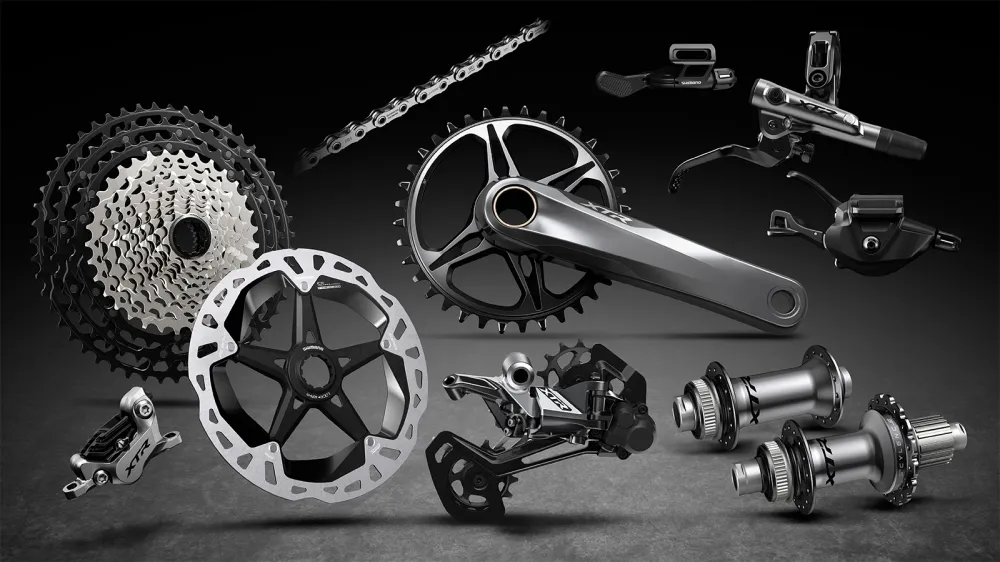Shimano has just released details of the latest incarnation of its flagship mountain bike group. The new XTR M9100 line isn’t an incremental improvement on the current M9000 group, but rather a group-up redesign intended to meet the needs of the fastest mountain bike racers in the world.
Shimano XTR M9100 highlights
- 1x12, 1x11, and 2x12 drivetrain options
- 10-51t and 10-45t cassettes
- New freehub design
- Two new brake systems for cross-country and enduro
- Available this fall
Designed for modern mountain bike racing
Since the introduction of the XTR M900 in 1992, XTR has been a race-focused component group. Over time, mountain bike racing has evolved. While cross-country racing was a factor in the development of the group, enduro racing pushed the Japanese manufacturer to prioritize durability as well as weight savings.
Let's go through the components item by item. We've done our best to include pricing and weights, but we're still waiting for information from Shimano on some of the components.
Shimano's top-tier MTB groupset goes 12-speed
Four drivetrain options to choose from
Shimano has fully embraced single chainring drivetrains, though the company still offers riders the ability to run two chainrings as well. This is the first XTR group to completely do away with a 3x option.
XTR M9100 offers three 1x options and one 2x option.
- 1x12 with a 10-51t cassette
- 1x12 with a 10-45t cassette
- 1x11 with a 10-45t cassette
- 2x12 with a 10-45t cassette
CS-M9100 Wide Range and Rhythm Step cassettes
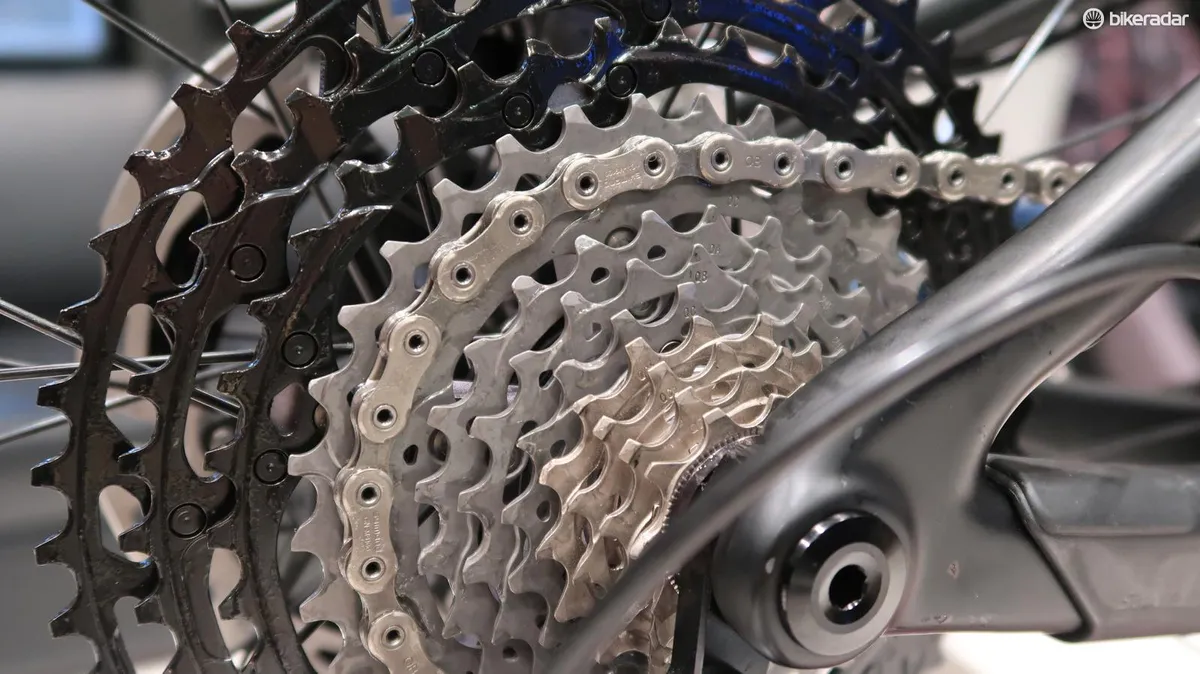
The Wide Range 10-51t cassette is intended for the rider who wants the widest possible range of gearing in a 1x package. According to Shimano, this is the option that will see the most extensive spec on production bikes.
The 51t design wasn’t a matter of one-upmanship with SRAM's Eagle groups (although it certainly doesn't hurt). Instead, it was a matter of placing the shift ramps in the ideal positions.
Feedback from Shimano’s athletes led the company to offer two additional 1x options.
Some racers prioritized smaller steps between gears over a wider range. To cater to these riders, Shimano also offers a 12-speed CS-M9100 Rhythm Stem 10-45t cassette.
This 12-speed cassette is also compatible with the company’s 2x12 drivetrain.
- 12-speed 10-51t cassette claimed weight: 367g
- Price: £289.99 / $397.99 (12-speed 10-51 and 10-45)
CS-M9110-11 11-speed cassette
Last on the list of 1x options is the 1x11 drivetrain. Weight weenies, this is the drivetrain for you.
This 11-speed 10-45t system uses the 12-speed 10-51t cassette minus the 51t cog.
The purpose of this drivetrain is to maximize weight savings. According to Shimano, the lack of the 51t granny gear saves 57g; the short-cage GS rear derailleur saves 3g, and a chain that’s shorter by six links saves 20g for a total weight saving of 80g over the Wide Range 12-speed group.
- 11-speed 10-45t cassette claimed weight: 310g
- Price: £249.99 / $324.99
New XTR cassette tech
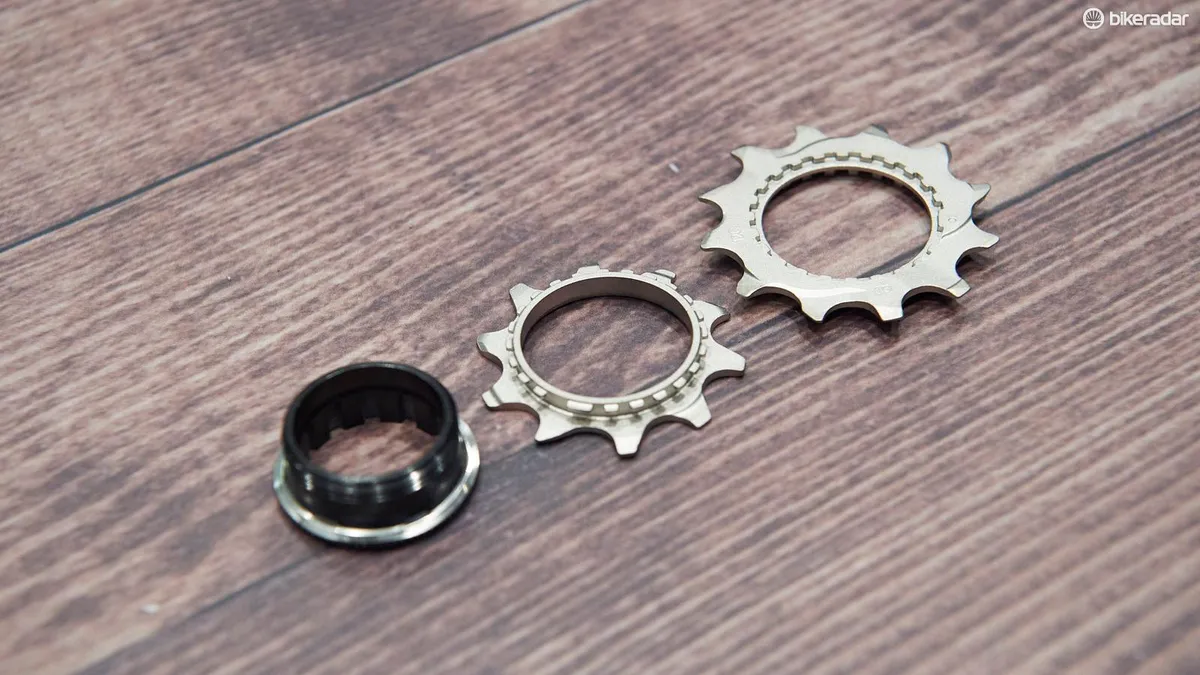
In the past, Shimano’s Hyperglide technology guided the chain onto the next largest cassette cog before completely disengaging the chain from the smaller cog. This advancement dramatically improved shift performance when it was introduced in 1988.
Today, we take smooth shifts into larger cogs for granted, but chains are still essentially “dropped” from larger cogs to smaller ones when shifting into harder gears — this punchy feeling is most apparent when shifting while sprinting.
Shimano’s engineers sought to redesign the ramps on the cogs and chain profiles to guide the chain smoothly onto smaller cogs. This is where Hyperglide+ comes in. XTR M9100 offers guided shifting in both directions. Shimano claims this new technology offers faster, smoother shifting during accelerations.
The three new cassettes also use a trio of stamped materials for the cogs. The three largest cogs (the two largest in the case of the 11-speed version) are constructed from hard-anodized aluminum while the middle five cogs are titanium. These cogs are mounted to a carbon composite beam spider. The smallest four cogs are constructed from steel and are individually mounted to the Micro Spline freehub.
Micro Spline freehub
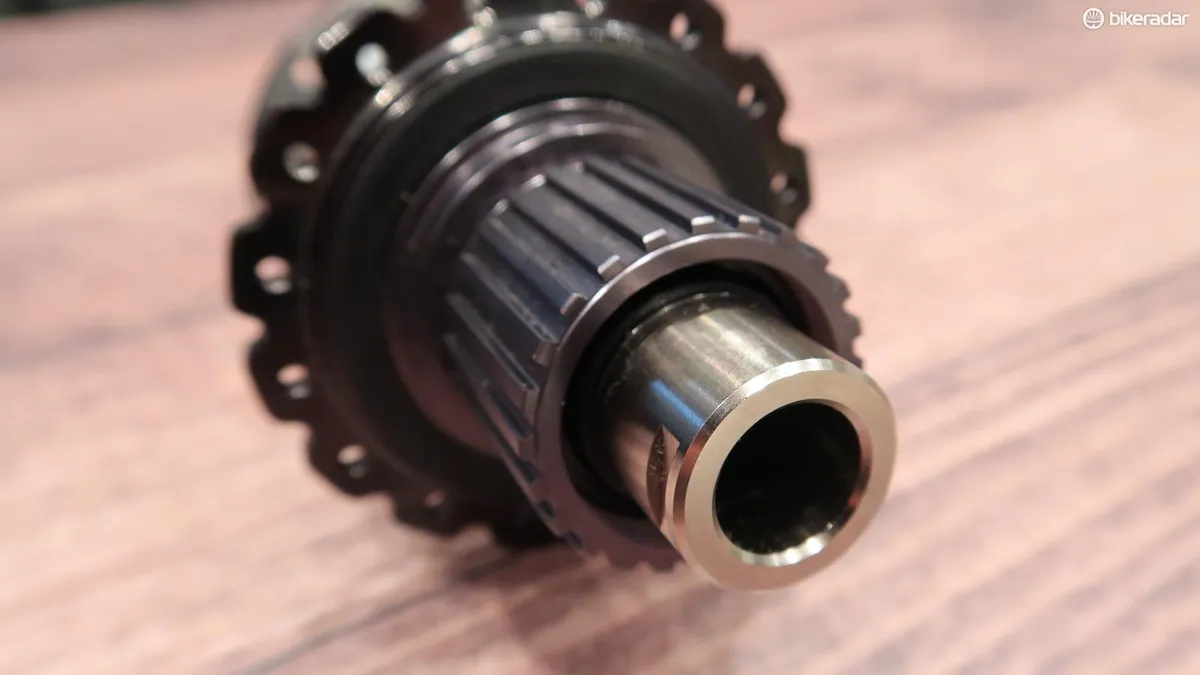
Shimano calls its new freehub standard Micro Spline. This new freehub was required to use a 10t cog, which actually mounts to the next cog and sits outboard of the freehub body.
Micro Spline uses 23 splines; previous HG freehubs used 13. The additional splines improve load distribution, allowing Shimano to construct the freehub body from aluminum, rather than steel, without worrying about the four smallest steel cogs marring the freehub body.
In addition to Shimano, DT Swiss will offer Micro Spline freehubs. It's possible that other companies may license the design in the future.
SCYLENCE freehub system
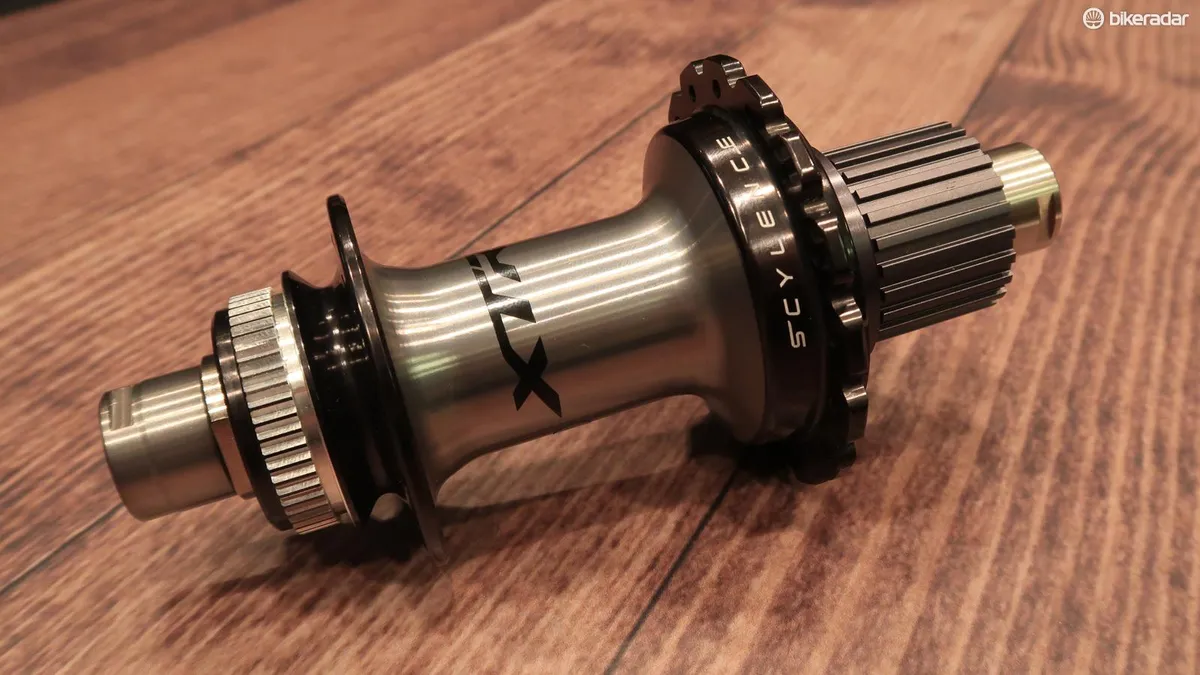
Shimano used this freehub redesign to roll out a new drive system for its rear hubs.
As the name suggests, the system is designed to be completely silent while coasting. It uses two driver plates that completely disengage while coasting, eliminating the drag that accompanies freehub ratcheting.
The SCYLENCE system offers 7.6 degrees of engagement. These new hubs are available in Boost and non-boost thru-axle versions that are compatible with XTR 11- and 12-speed cassettes for J-bend and straight-pull spokes.
There’s also a dedicated version of the XTR hub, FH-M9125-B that is designed specifically for the lightweight 1x11 group. The driveside flange sits 4.7mm outboard compared to the 12-speed compatible rear hub, allowing for more balanced spoke tension.
- Claimed weight: 134g / 231g (Boost front and rear)
- Price: £134.00 / £249.99, $179.99 / $329.99 (Boost front and rear)
CN-M9100 Hyperglide+ chain

This new chain is the next step in the development of Shimano’s Hyperglide shift technology. Compared to a standard Shimano Hyperglide chain, the inner plates have been extended to directly contact the narrow teeth on narrow/wide chainrings.
According to Shimano, while this design increases chain retention, it also reduces vibration through the drivetrain, thereby increasing efficiency. It is also designed to be more tolerant of the extreme chain angles that come with using a wide range 1x drivetrain.
Last but not least, the CN-M9100 chain uses a quick-link for tool-free installation.
- Claimed weight: TBC
- Price: £49.99 / $64.99
Shifters and dropper seatpost levers
The M9100 series of shift levers uses Shimano’s light-action Rapid Fire shift technology with a new I-SPEC EV mounting design intended to offer riders more flexibility to clean up cockpits cluttered with shift, brake and dropper levers.
SL-M9100 shift levers
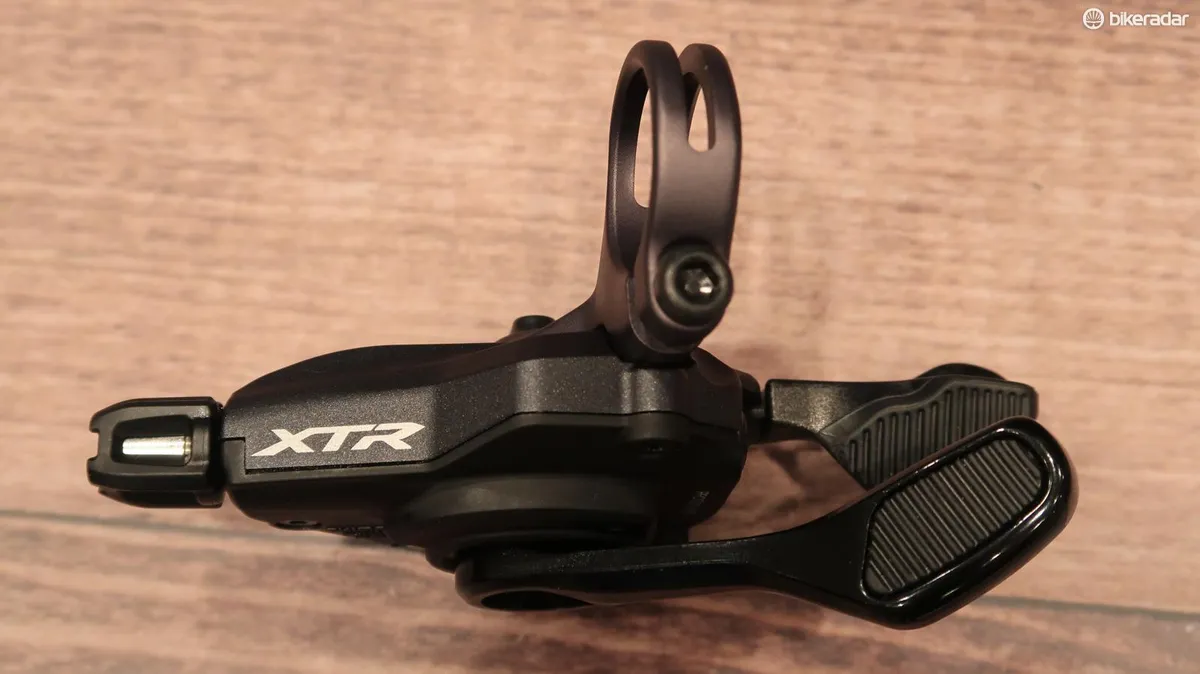
Shimano lightened the shift force by a claimed 35 percent compared to the M9000 shift levers.
Increasing shift speed was a priority of this new group. In addition to reducing shift force, the company adjusted the ergonomics to make the shift paddles easier to access in a hurry.
The rear shifter can switch between 11- and 12-speed operation.
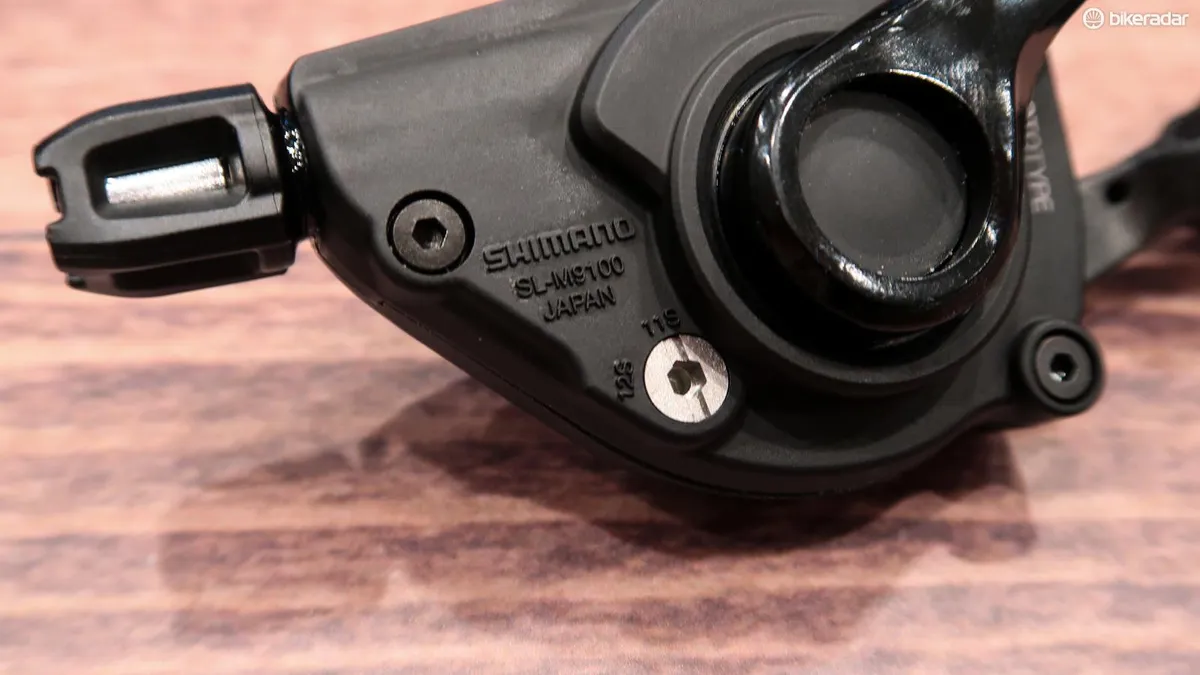
- Claimed weights: 121g (right lever, bar clamp); 117g (direct mount)
- Price: £94.99 /$129.99
SL-M91000-L front shifter
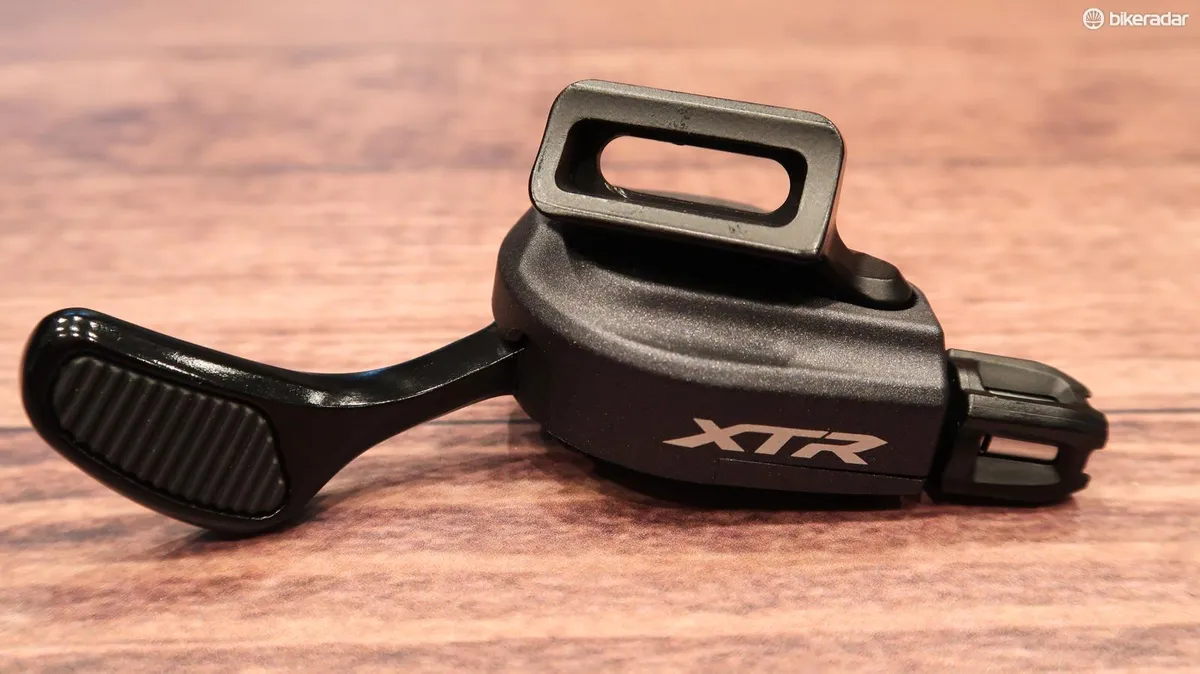
Since there’s no triple crankset option in this new XTR group, Shimano was able to simplify front shifting to a single, two-way release push/pull lever. Not only does this single front shift lever save weight, it also makes it easier to run a dropper remote next to the front shift lever.
- Claimed weight: TBC
- Price: £94.99 / US pricing TBC
SM-MT00-IL dropper lever
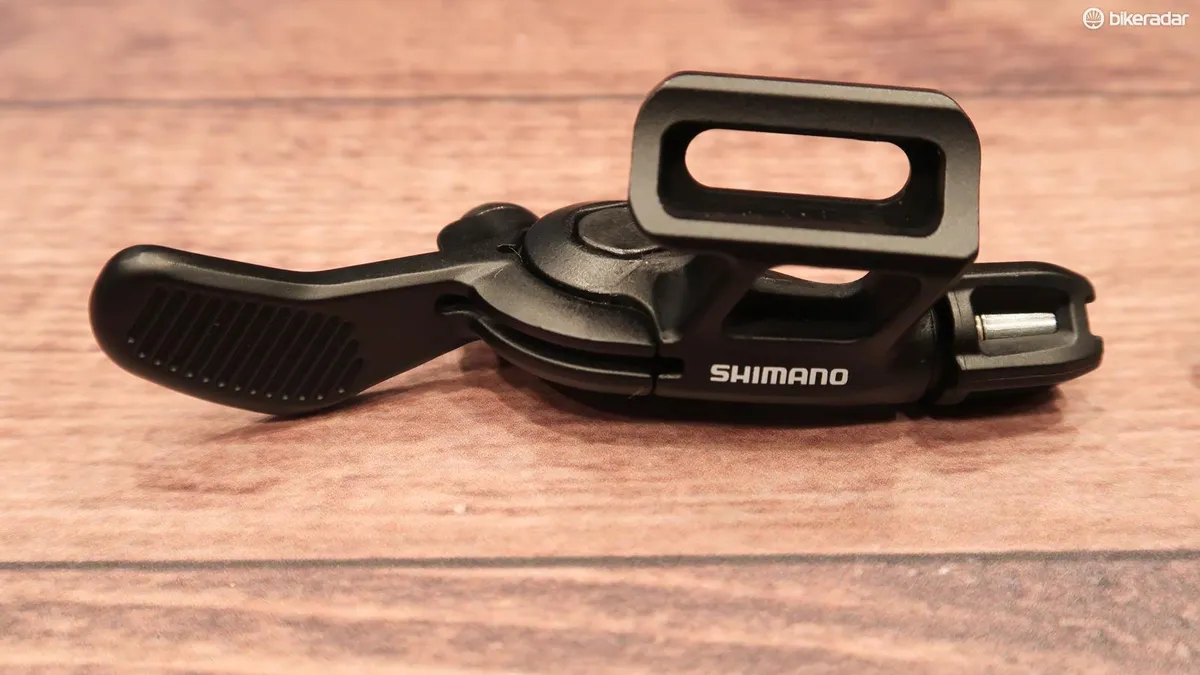
While we’re on the subject of dropper seatposts, Shimano has developed its first dropper seatpost lever.
Many under bar dropper levers replicate the shape and positioning of the larger, downshift paddles. According to Shimano, a lever that mimics the position of an upshift lever provides a more natural position for the rider’s thumb.
This new remote uses a setscrew to secure the cable at the lever and offers 7mm of cable pull. It is only compatible with the I-SPEC EV mounting system.

- Claimed weight: TBC
- Price: £44.99 / $59.99
RD-M9100-SGS, RD-M9100-GS and RD-M9120-GS rear derailleurs
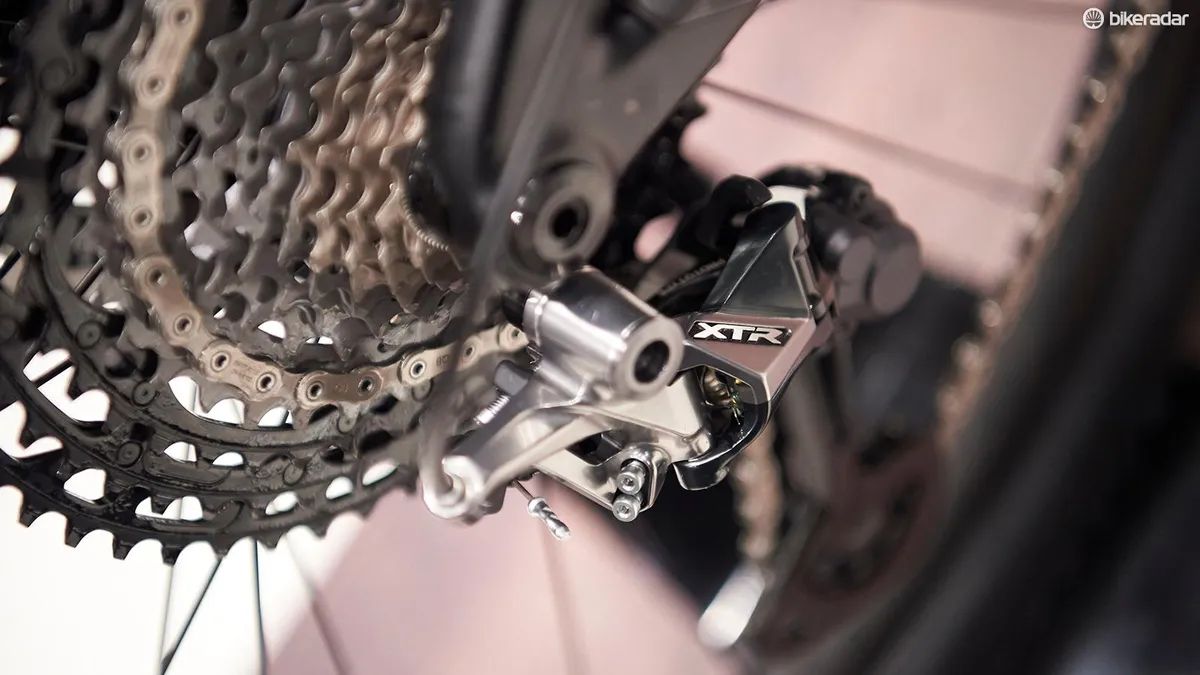
Shimano has three new rear derailleurs to accompany these four drivetrain configurations.
The long-cage RD-M9100-SGS is compatible with both 10-51t and 10-45t 12-speed cassettes.
The short-cage RD-M9100-GS is the go-to gear changer for riders dedicated to running 1x drivetrains with either 11- or 12-speed 10-45t cassettes.
In addition to smaller steps between gears and weight savings, using the short-cage GS rear derailleur with narrower-range 1x groups gains 28mm of ground clearance over the long-cage SGS model.
Double riders will use the RD-M9120-GS. It’s specifically designed for use with the 2x12 drivetrain and the 10-45t cassette.
- Claimed weights: 237g / 240g / 241g (GS / SGS / M9120-SGS)
- Price: £189.99 / $259.99
FD-M9100 D/E/M front derailleur
Shimano offers a side-swing front derailleur design to accompany the 2x12 drivetrain. The FD-M9100 derailleur comes in Direct, E-Type and mid-clamp designs. This new derailleur is compatible with 49 and 52mm chain lines.
- Claimed weight: TBC
- Price: £89.99 / $124.99
SM-CD800 chain guide
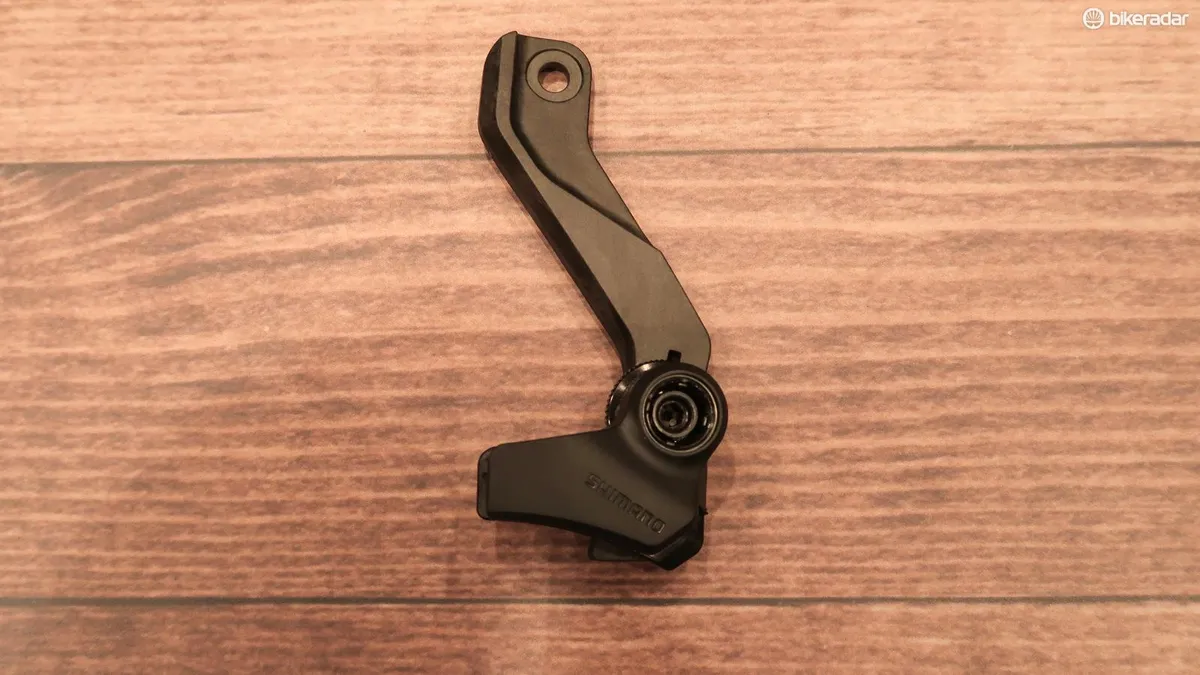
Despite advancements in chain retention on 1x drivetrains, chain keepers still have a place — especially if a podium is on the line.
The SM-CD800 addresses several common complaints with upper chain guides. It allows for easy chainline and height adjustments by loosening a single bolt and turning a thumbscrew. Tightening the bolt locks in both adjustments.
This little guide is available in Direct, E-Type and ISCG-O5 versions.
- Claimed weight: TBC
- Price: UK pricing TBC / $49.99
M9100 Hollowtech II crankset
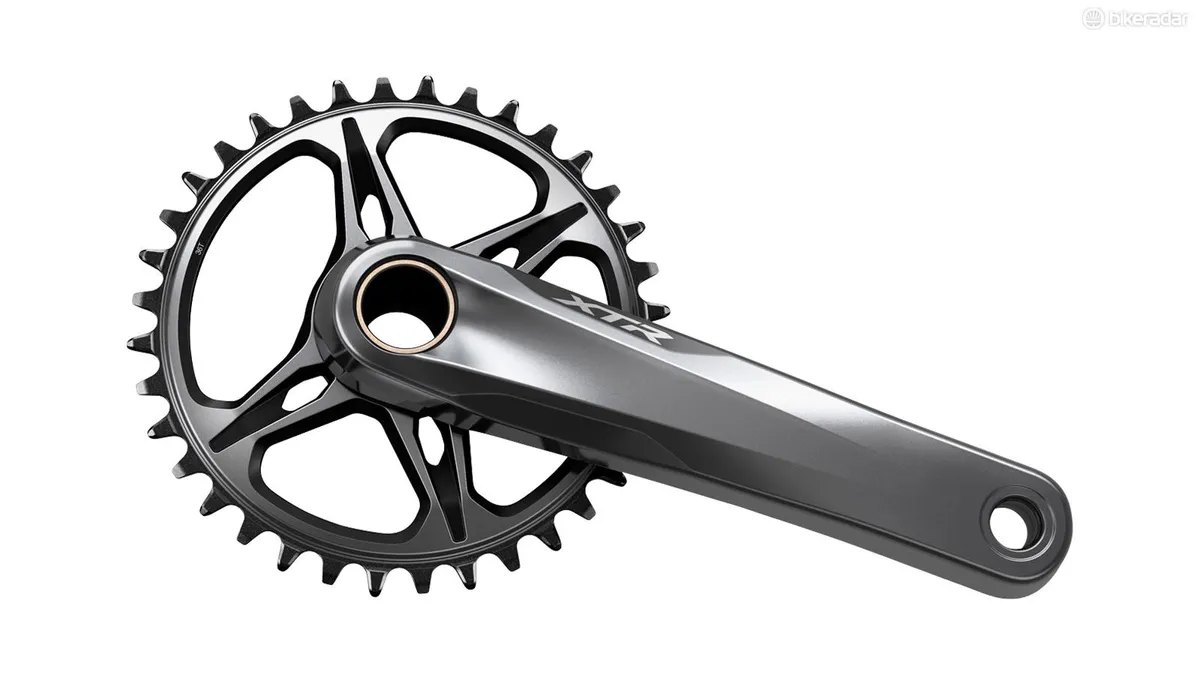
Shimano has moved to a direct-mount interface that allows riders to swap between 1x and 2x drivetrains.
Shimano offers 1x chainrings in 30, 32, 34, 36, and 38t sizes. In the case of 2x chainrings, Shimano offers a single 38/28t combination.
The chainrings can be easily swapped with an interface similar to the spline used on XT-level external bottom brackets.
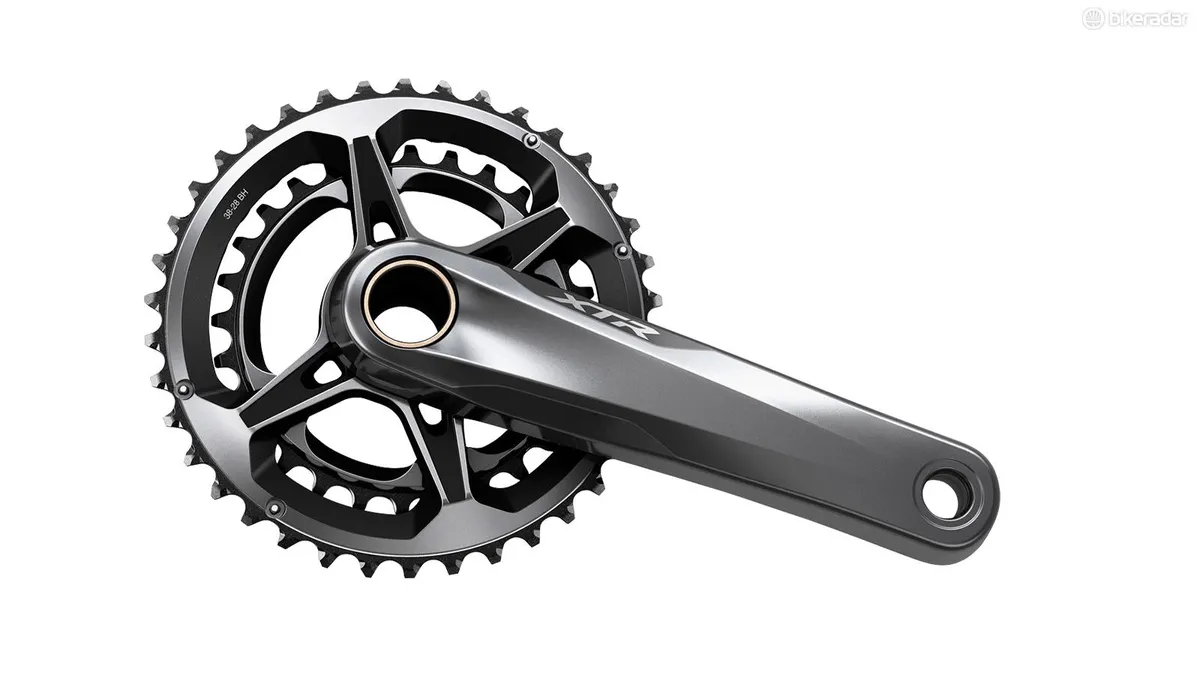
These new crankarms come in 162mm and 168mm Q-factors. The narrower, 162mm Q-factor is primarily designed for cross-country bikes and won’t clear the chainstays on many of today’s trail and enduro bikes.
All 1x chainrings use a 52mm chain line that’s compatible with 142 and 148mm rear axle spacing, thanks to the ability of the Hyperglide+ chain to deal with extreme angles.
Double chainrings come in 49 and 52mm chain lines for 142 and 148mm rear axle spacing, respectively.
New for M9100 is the manner in which the left crank arm is attached and the bearings are preloaded. Gone are the pair of pinch-bolts used on past Shimano crankarms. In its place is an 8mm self-extracting bolt to hold the non-drive crankarm in place and a preload ring to adjust the bottom bracket bearings.
Shimano claims the M9100 series crank arms are lighter and stiffer than the M9000 Race and M9020 Trail crankarms. Unlike the previous version, there is no distinction between cranksets in this new group.
- Claimed weight 1x crankset: TBC
- 1x crankset price: £309.99 / $419.99
- Claimed weight 2x crankset: TBC
- 2x crankset price: £439.99 / $589.99
- 1x chainring price: £99.99 / $129.99
XTR M9100 brake systems
While some components have been condensed from previous Race and Trail categories, brake systems remain a component with very different needs, depending on the discipline. In this new group, ‘Enduro’ replaces ‘Trail’ as the name of the kit designed for more rigorous use.
BL-M9100 and BR-M9100 XC brakes
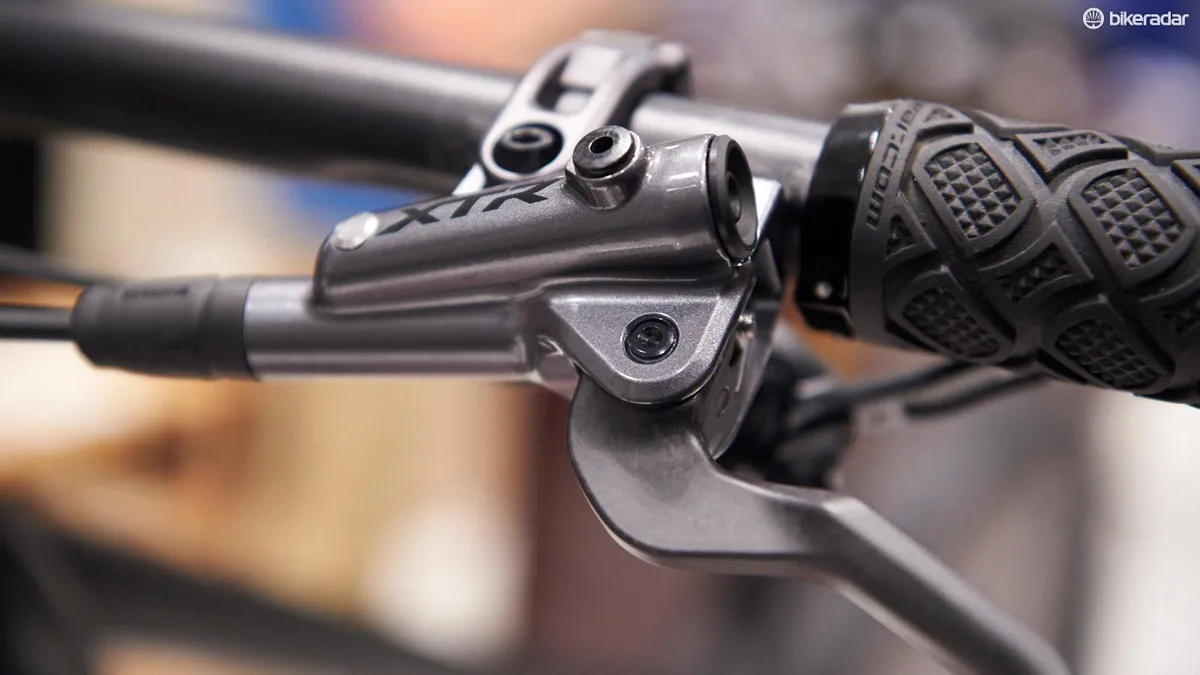
This lever and caliper combo is for cross-country racing. The two-piston brake is claimed to be 26g lighter than the M9000 series brakes while the levers are claimed to be 10 percent more rigid. These top-end XC brakes use carbon lever blades.
- Claimed weight: 204g (lever, hose and caliper)
- Price: £579.98 / $599.98 (front and rear brakes)
BL-M9120 and BR-M9120 enduro brakes
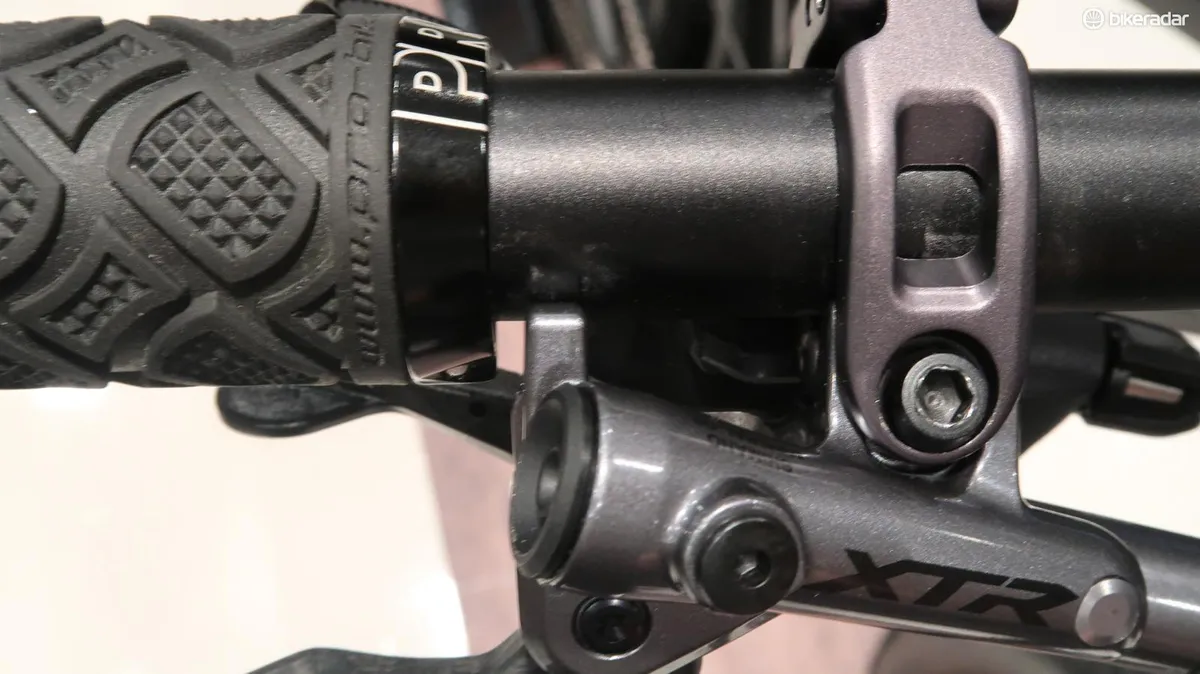
Enduro racers, these are your brakes. Many enduro racers gravitated toward Shimano’s Saint downhill brakes for their superior stopping power, despite the fact their modulation left much to be desired.
These new four-piston brakes have the same power as Saints with a wider range of modulation. They are compatible with XTR and Saint level brake pads. Unlike the M9100 brakes, the M9120 uses alloy levers, which can be bent back into place after a crash.
One criticism of the previous versions of XT and XTR brakes is that levers could feel vague during hard braking. This is because the handlebar clamps, which were very narrow to make room for other components, would flex.
Shimano moved the clamp inboard from the previous design as a way to free up valuable handlebar space. To reduce flex, Shimano added a brace at the end of the lever body.
There appears to be enough space between this reinforcement and lever clamp to mount the dropper lever or shifter of your choice. We’ll revisit this subject during testing.
- Claimed weight: 277g (lever, hose and caliper)
- Price:£579.98 / $649.98
PD-M9100 XC pedals
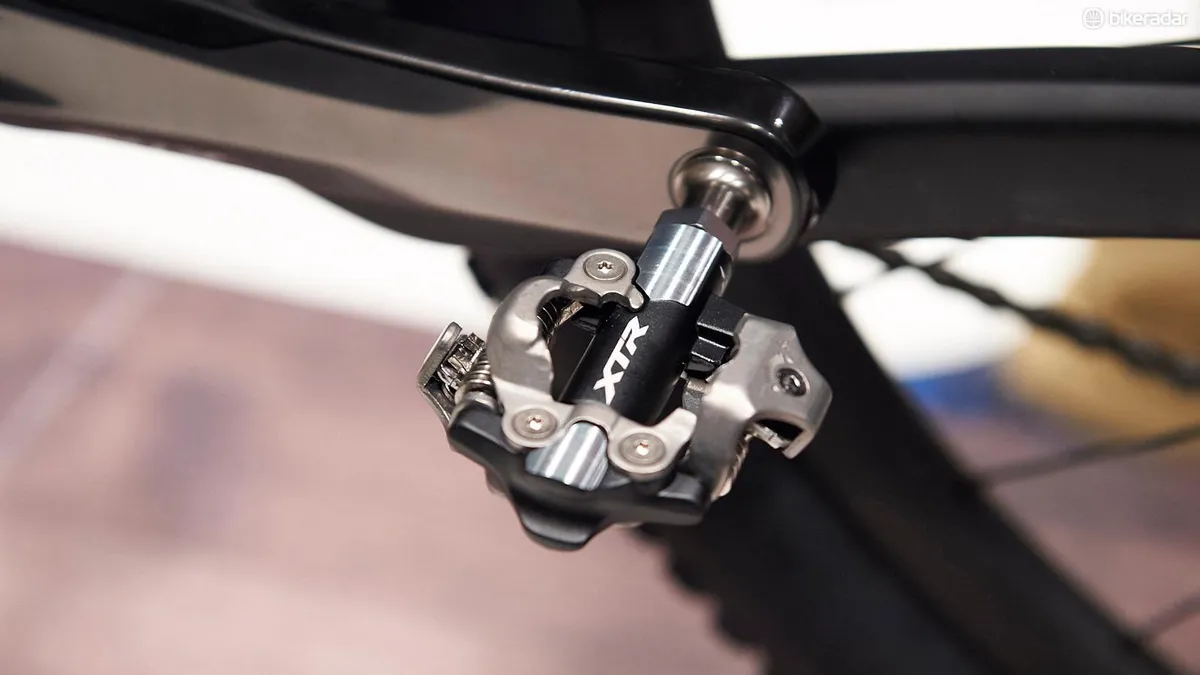
These new XTR XC pedals are wider than the M9000 version with more space to shed mud.
The standout feature is the addition of a second spindle length. Shimano now offers a 3mm shorter, 52mm spindle. This shorter spindle matches the Q-factor of Shimano SLD-SL road pedals, which should cater to gravel riders as well as cross-country racers.
- Claimed weights: 310g (52mm spindle), 314g (55mm spindle)
- Price: £119.99 / $179.99
PD-M9120 Enduro pedals
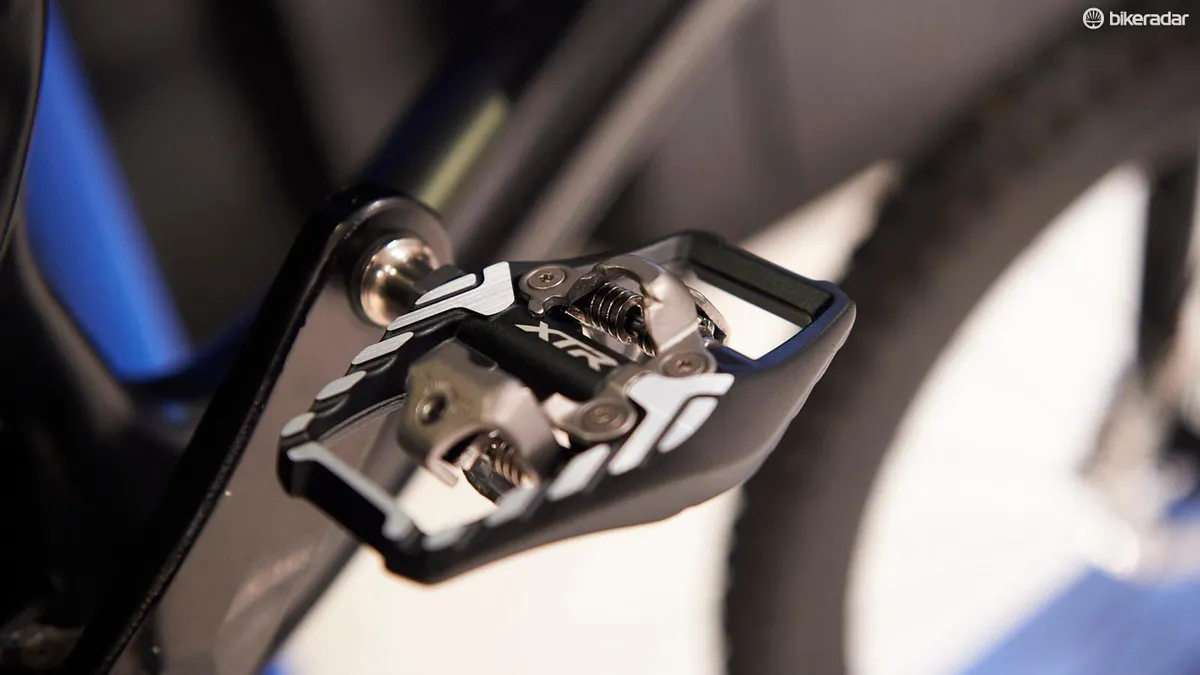
Like their cross-country counterparts, the MN9120 Trail pedals see an increase in contact area. According to Shimano, this came at the request of some enduro racers who position their cleats further back to replicate their riding position with flat pedals.
- Claimed weight: 398g
- Price: £124.99 / $179.99
What’s missing from the new XTR group?
There are a couple of notable absences from the M9100 group.
Most obvious is the lack of a Di2 counterpart. According to Shimano, the company chose to focus on refining the technologies in the mechanical group. Company representatives declined to comment on when it would release an electronic version of XTR, though it's likely that we'll see XTR Di2 late this year or early in 2019.
XTR M9100 has a wealth of hub options but lacks complete wheelsets. This marks a change in strategy for the component giant. It now plans to focus on hubs and give riders and bike manufacturers the ability to lace XTR hubs to the rims of their choosing.
Visit bike.shimano.com for more information.
